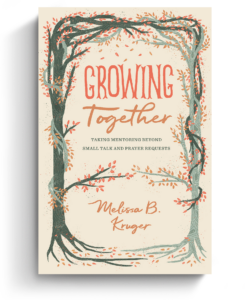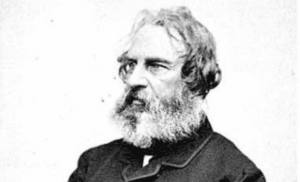I’m a pastor from the old school. Specifically, the old Sunday school.
Back in my day, Sunday school lessons for children too often followed a distinct pattern: introduce a biblical character, discern his or her moral compass, and draw out practical life lessons we can emulate. Take Noah, for instance: a paragon of obedience, whose ark-building venture was an exercise in radical trust in God’s command. The moral for us: be like Noah by trusting and obeying.
A shift occurred as the evangelical world embraced a Christ-centered reading of the Old Testament. It’s unclear when it began, but it started to be fully felt in the early 2000s when resources like The Jesus Storybook Bible transformed how we engaged with Bible stories.
Who’s the Hero?
Instead of seeing ourselves as the heroes of these narratives, we began seeing Christ as the ultimate fulfillment of every figure. We no longer saw ourselves as David slaying our Goliaths. Instead, we recognized that, as Tim Keller famously said, “Jesus is the true and better David whose victory becomes his people’s victory, though they never lifted a stone to accomplish it themselves.”
Such christological reading remains a welcome corrective to the do-better moralism that frequently plagued the old approach. Yet as Mitch Chase observes, seeing Jesus on every page of Scripture doesn’t preclude us from learning moral and practical wisdom from these accounts.
Seeing Jesus on every page of Scripture doesn’t preclude us from learning moral and practical wisdom from these accounts.
The New Testament authors themselves use the Old Testament not just to point to Christ but to instruct and edify believers in their walk of faith. We see this most clearly in Hebrews 11—the “heroes of the faith” chapter—which recalls the faith and actions of biblical figures to encourage and challenge believers to live in ways that please God.
Five Principles to Save This Biblical Approach
This is the fundamental reason we shouldn’t discard the old approach—the Bible itself invites readers to learn from the lives of its characters. But to avoid the mistakes of the past, especially in how this was modeled in Sunday school curricula, we need to follow certain principles.
1. Present the characters as they’re portrayed in the Bible.
A common problem with the old-school approach was presenting biblical characters as one-dimensional paragons of righteousness rather than as complex figures who often struggled with sin and failure. Accurate portrayal resonates more with the human condition, providing relatable examples that can inspire believers. The flaws of biblical characters don’t disqualify them as moral examples. Instead, they offer a realistic depiction of God’s grace at work in imperfect people.
2. Trust that God knew what details to share.
Biblical narratives are rich with human experiences and characters who exhibit both virtue and vice. By examining the lives of these individuals, believers can gain insights into the nature of good and evil, wisdom and folly. Paul provides us with an explicit model of using Old Testament narrative for moral teaching in 1 Corinthians 10:1-5. He retells the exodus narrative and gives, point-by-point, the moral lessons we should learn from the (mis)behavior of the Israelites.
And to make sure we don’t miss his point, he directly states in verse 6 that “these things took place as examples for us, that we might not desire evil as they did.” This demonstrates there was an intended pedagogical purpose behind the recording of these lives, and that we can learn from the flaws and sin of these “heroes” about what not to do.
3. Include a whole-Bible approach to character analysis.
Biblical characters in the Old Testament are often embedded in narratives that include divine commentary and consequences for their actions, which provide clear moral evaluations. But sometimes we need to draw on other parts of Scripture, such as the wisdom literature of Proverbs, that more explicitly outline the outcomes of righteous and wicked behaviors. The revelation of the New Testament can also shed greater light on how we’re to understand the people in the Old Testament.
By applying the basic and fundamental rule of biblical interpretation—the clear interprets the obscure—we can bring other passages to bear on the actions of biblical figures. For example, Proverbs warns against the seduction of the adulterous woman and the perils of lust (Prov. 5:3–20; 7:25–27). This helps us understand the failings of Samson, who despite his great strength failed to guard his heart and was ultimately led to ruin by Delilah.
4. Use this method to reinforce the truth that the righteous obeyed in the power of God.
One of the pitfalls of the moral approach to be avoided is to act as if Noah, David, and other heroes of the faith were obedient in their own strength. But the Bible makes clear that what set them apart was they responded to God in faith. It was because “Noah found favor in the eyes of the LORD” (Gen. 6:8) that he was able to obey in the face of wicknessness, and because God called Abram and Moses (Gen. 12:1–3; Ex. 3:1–6) that they were holy. Just like us, none of the Old Testament saints could be holy apart from the sovereign work of God in their hearts. They needed God’s power just like we do.
5. Use the moral example method to read the Old Testament in a more Christ-centered way.
Many of the main characters in the Old Testament serve as types that show us what Christ would be and do. That’s why the formula of “Jesus is the better and greater [insert biblical figure]” is a helpful typological shortcut—their lives are signposts pointing toward the ultimate moral example found in Jesus.
Yet before we attempt to “read” these biblical figures typologically, we need to see them as humans. They aren’t fictional characters or abstractions of human characteristics; they were real flesh-and-blood men and women. By fully understanding them as moral agents, we gain a better understanding of and appreciation for Jesus, the “better and greater” moral agent they point us to.
From Paragons of Virtue to Models of Grace
Consistently applying these four principles will help us avoid the temptation to employ biblical characters as paragons of virtue to be imitated uncritically. They’ll serve as guardrails to help us acknowledge that these lives, as recorded under the inspiration of the Holy Spirit, provide a framework for understanding the complexities of walking in faith and obedience to God.
Before we attempt to ‘read’ these biblical figures typologically, we need to see them as humans.
When applied thoughtfully, this practice helps Sunday school students—whether children or adults—to see we’re not presenting flawless models of behavior. We’re showing examples of the transformative power of God’s grace in human lives and drawing from the experiences of biblical figures who can guide contemporary believers in living out our faith with integrity and authenticity. These biblical figures serve as mirrors, mentors, and warnings, equipping the faithful with wisdom gleaned from the past, applicable to the moral and spiritual challenges of the present.
Involved in Women’s Ministry? Add This to Your Discipleship Tool Kit.
 We need one another. Yet we don’t always know how to develop deep relationships to help us grow in the Christian life. Younger believers benefit from the guidance and wisdom of more mature saints as their faith deepens. But too often, potential mentors lack clarity and training on how to engage in discipling those they can influence.
We need one another. Yet we don’t always know how to develop deep relationships to help us grow in the Christian life. Younger believers benefit from the guidance and wisdom of more mature saints as their faith deepens. But too often, potential mentors lack clarity and training on how to engage in discipling those they can influence.
Whether you’re longing to find a spiritual mentor or hoping to serve as a guide for someone else, we have a FREE resource to encourage and equip you. In Growing Together: Taking Mentoring Beyond Small Talk and Prayer Requests, Melissa Kruger, TGC’s vice president of discipleship programming, offers encouraging lessons to guide conversations that promote spiritual growth in both the mentee and mentor.

































